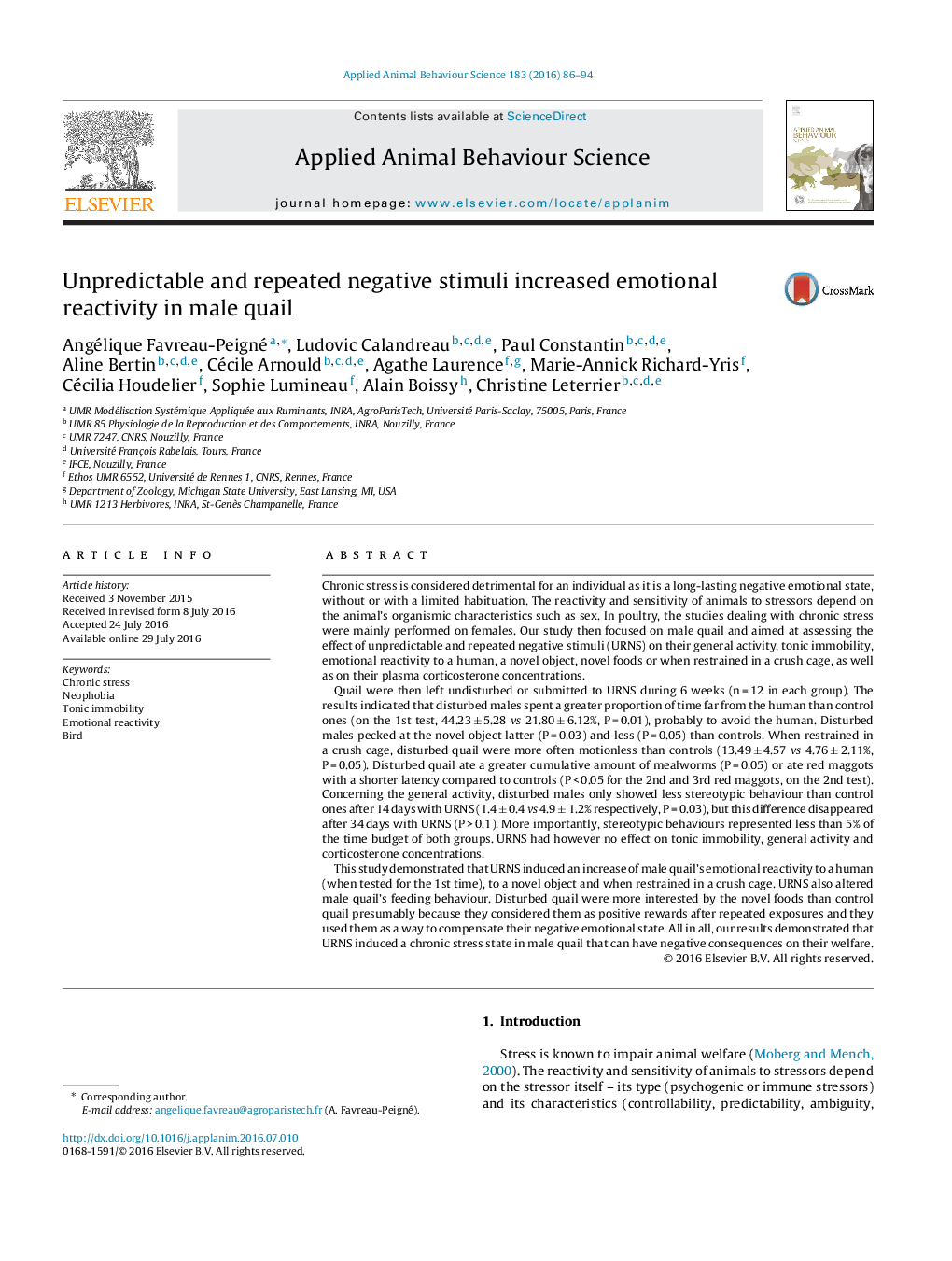| کد مقاله | کد نشریه | سال انتشار | مقاله انگلیسی | نسخه تمام متن |
|---|---|---|---|---|
| 4522356 | 1625323 | 2016 | 9 صفحه PDF | دانلود رایگان |
• URNS induced a greater interest for food rewards in male quail.
• URNS also increased their emotional reactivity in some tests (e.g. novel object).
• URNS had however no effect on tonic immobility and corticosterone concentrations.
• Male quail experienced a chronic stress state which certainly altered their welfare.
Chronic stress is considered detrimental for an individual as it is a long-lasting negative emotional state, without or with a limited habituation. The reactivity and sensitivity of animals to stressors depend on the animal’s organismic characteristics such as sex. In poultry, the studies dealing with chronic stress were mainly performed on females. Our study then focused on male quail and aimed at assessing the effect of unpredictable and repeated negative stimuli (URNS) on their general activity, tonic immobility, emotional reactivity to a human, a novel object, novel foods or when restrained in a crush cage, as well as on their plasma corticosterone concentrations.Quail were then left undisturbed or submitted to URNS during 6 weeks (n = 12 in each group). The results indicated that disturbed males spent a greater proportion of time far from the human than control ones (on the 1st test, 44.23 ± 5.28 vs 21.80 ± 6.12%, P = 0.01), probably to avoid the human. Disturbed males pecked at the novel object latter (P = 0.03) and less (P = 0.05) than controls. When restrained in a crush cage, disturbed quail were more often motionless than controls (13.49 ± 4.57 vs 4.76 ± 2.11%, P = 0.05). Disturbed quail ate a greater cumulative amount of mealworms (P = 0.05) or ate red maggots with a shorter latency compared to controls (P < 0.05 for the 2nd and 3rd red maggots, on the 2nd test). Concerning the general activity, disturbed males only showed less stereotypic behaviour than control ones after 14 days with URNS (1.4 ± 0.4 vs 4.9 ± 1.2% respectively, P = 0.03), but this difference disappeared after 34 days with URNS (P > 0.1). More importantly, stereotypic behaviours represented less than 5% of the time budget of both groups. URNS had however no effect on tonic immobility, general activity and corticosterone concentrations.This study demonstrated that URNS induced an increase of male quail’s emotional reactivity to a human (when tested for the 1st time), to a novel object and when restrained in a crush cage. URNS also altered male quail’s feeding behaviour. Disturbed quail were more interested by the novel foods than control quail presumably because they considered them as positive rewards after repeated exposures and they used them as a way to compensate their negative emotional state. All in all, our results demonstrated that URNS induced a chronic stress state in male quail that can have negative consequences on their welfare.
Journal: Applied Animal Behaviour Science - Volume 183, October 2016, Pages 86–94
